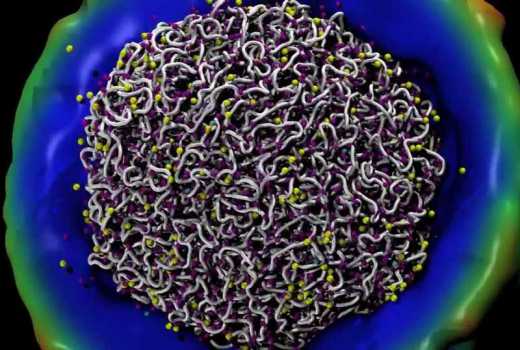Kenya’s effort to fully fight polio has been dealt a major blow following the discovery of an infectious virus in parts of Nairobi. The killer virus, poliovirus type 2 (VDPV2), discovered in Somalia two months ago, has also been detected in a sewage sample in the city.
According to the World Health Organisation [WHO], no cases of polio have been discovered or children reported paralysed in Kenya or Somalia but children are at a high risk of contracting the virus. WHO added that response activities are underway and neighbouring countries have been alerted to strengthen their surveillance for the poliovirus and assess their immunity.
 |
| Poliovirus [Photo: Courtesy] |
“In Somalia, three cVDPV2s were isolated from environmental samples collected January 4 and 11, 2018, from Hamarweyn district in Banadir province (Mogadishu). These latest isolates are genetically linked to previously isolated VDPV2s from 2017, collected on 22 October and 2 November 2017 from environmental samples collected from Waberi district, Banadir province.
In Kenya, one cVDPV2 was isolated from an environmental sample collected on March 21, 2018 from Nairobi, linked to the cVDPV2 previously confirmed in Somalia,” reads part of WHO’s statement.
Know if news is factual and true. Text 'NEWS' to 22840 and always receive verified news updates. Kenya and Somalia conducted their last immunization campaigns with trivalent OPV in early 2016, in advance of the trivalent to bivalent OPV switch in April 2016. Searches for residual trivalent OPV stocks are ongoing including public, private and NGOs. No tOPV stocks have been found. Neighbouring countries across the Horn of Africa, including in Yemen, have also been alerted, and public health authorities are assessing overall immunity levels and strengthen disease surveillance.
WHO said that investigations are underway to establish the origin of the virus so as to prevent it from spreading further. “Investigations are currently ongoing to determine the source and origin of this virus, where it initially emerged and where it moved to. However, it is clear that two countries in the Horn of Africa are currently affected, and the overriding priority is to stop this virus in the known affected areas and prevent it from spreading further,” said
The world health body pointed out that there are various challenges to ensure that the virus is stopped from spreading such as the inaccessibility of children for vaccination over extended periods of time and high levels of population movement in and out of the infected region/s. WHO in 2015 urged the Catholic Church in Kenya to drop its call on Kenyans to boycott the polio vaccination campaign saying the vaccine is safe. This came as the controversy on the polio immunisation heightened as the Catholic Church questioned the safety of the vaccine. WHO said the vaccines were manufactured and procured to the highest standards and safety and there was no reason to doubt their safety.
Polio is a highly infectious disease caused by a virus. It invades the nervous system and can cause irreversible paralysis in hours. It mainly affects children under age 5 whose immunity to diseases is still relatively weak. The last polio outbreak in Kenya was in 2013 when 14 cases were reported, including two deaths. The Ministry of Health said that the outbreak was only successfully controlled after several rounds of vaccination campaigns.SOURCE

Post a Comment